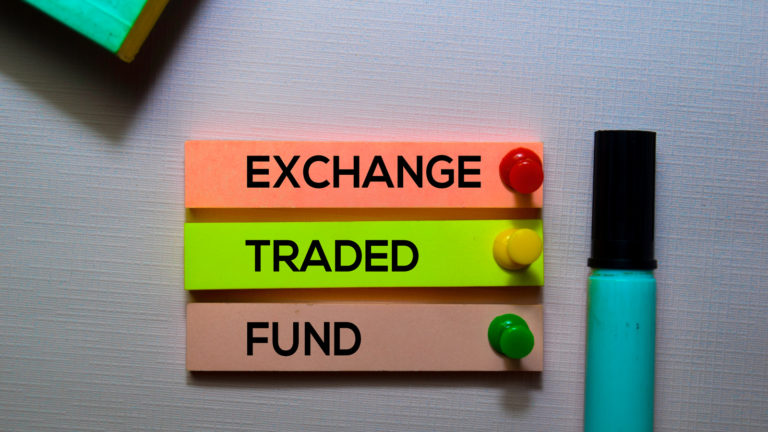Savings accounts are gaining newfound popularity as high-yield options bumped beyond the 5% APY mark. Access to risk-free income is an investor’s dream, particularly in today’s tough stock market, and yield like this hasn’t been available in decades. Today, more than $5.3 trillion is sitting on the sidelines, waiting for improved market conditions, with much of that generating yield in savings accounts. This has led to the rise of bond ETFs to buy.
But there’s a downside to high-yield banking. Income generated from these savings accounts is classified as income in the IRS’ eyes, meaning you owe income tax on the gains. Those savings accounts typically deploy your capital into short-term bonds. Those bonds come with a tax benefit lost when using a savings account.
If you aren’t comfortable laddering bonds on your own but want to capitalize on bonds’ tax benefits, these bond ETFs are the best way to beat the bank. At the same time, since they’re offering as much (or more) yield as your favored bank, they’re best if you keep your net worth in cash, waiting for a market reversal.
iShares 0-3 Month Treasury Bond ETF (SGOV)

iShares 0-3 Month Treasury Bond ETF (NYSEARCA:SGOV) invests exclusively in short-term, zero-coupon US Treasurys. US Treasurys are exempt from state taxes. While this means coupon-based distributions from all Treasury bond ETFs are exempt, longer-dated bond ETFs incur capital gains tax requirements when they sell bonds on their balance sheet.
Its expense ratio is 0.13%, or $13 annually on a $10,000 investment.
A bond ETF with 7 to 10-year Treasurys sells bonds when they fall below the target maturity date. If the fund sells a 10-year Treasury when maturity breaks below seven years for a profit, you’re taxed on the capital gain from the transaction at distribution.
But since SGOV buys short-term securities and lets them reach maturity, distributions are almost completely state tax-exempt. At a 5.34% SEC yield, this makes SGOV the best overall alternative to your savings account.
Vanguard Tax-Exempt Bond ETF (VTEB)

Vanguard Tax-Exempt Bond ETF (NYSEARCA:VTEB) invests in municipal bonds, which are completely exempt from federal income tax and usually exempt from state taxes. At the same time, VTEB’s expense ratio is incredibly low at 0.05%, or $5 annually on a $10,000 investment.
This makes VTEB ideal for those with more capital willing to sacrifice some yield for better tax benefits. Right now, VTEB’s SEC yield is 3.62%. That’s a bit lower than you’d get from a high-yield savings account, but, if you’re keeping a ton of cash on the sidelines, tax exemption could outweigh the limited yield.
Since the bond ETF holds municipal bonds, there’s a slightly higher risk involved than bond ETFs holding Treasurys. But VTEB tries to negate as much risk as possible. VTEB limits exposure from any single issuer to ensure the bond ETF is well-balanced. The bond ETF also avoids certain volatile, riskier sectors like tobacco, housing, and US territory-issued municipal bonds.
iShares iBonds Dec 2025 Term Treasury ETF (IBTF)

iShares iBonds Dec 2025 Term Treasury ETF (NASDAQ:IBTF) has a lower yield than SGOV but has a benefit that will pay off if the Fed cuts interest rates. Bond prices and yield move inversely. If the Fed slashes rates or announces a formal pause, existing bond prices will jump as newly issued yields fall. If that happens before December 2025, when the bond ETF’s assets mature, the ETF per-share price will jump.
This move will incur capital gains if you sell the shares before maturity. But it could prove beneficial if you don’t want to hold on until the bitter end. When December does arrive, the bond ETF will liquidate the fund and you’ll get your principal investment back. In the meantime, IBTF offers a 5.05% yield that (like SGOV) is exempt from state taxation. Ultimately, IBTF is a slightly more speculative play as longer maturity introduces greater uncertainty. But the speculative play could pay off if the yield inversion breaks down.
Its expense ratio is 0.07%, or $7 annually on a $10,000 investment.
On the date of publication, Jeremy Flint held a long position in SGOV. The opinions expressed in this article are those of the writer, subject to the InvestorPlace.com Publishing Guidelines.
